My research into lash eggs has lead to many contradictory theories and a great deal of inaccurate information, so I worked with Dr. Annika McKillop, DVM, MspVM, DACPV, a practicing poultry veterinarian, who spoke with me at length, explaining what causes a Pus Coagulegg, until I had a clear understanding of the problem and potential solutions. Curiously, veterinarians do not have a catchy nickname for the lash egg, the simply refer to the nasty junk as "caseous exudate." (caseous being Latin for cheese-like) The specifics Dr. McKillip gave me went into much more technical detail than most backyard chicken keepers want to know, so I distilled it down to the essentials for you.
CAUSE of PUS COAGULEGGS = SALPINGITIS
Lash eggs result from an infection (bacterial or viral) that causes inflammation of a hen's oviduct. That inflammation is referred to as Salpingitis. The hen's immune system reacts to the inflammation by trying to wall-off the infection with a waxy, cheese-like pus. This pus mass may or may not contain yolk, albumen, (egg white) eggshell, egg membrane, blood or pieces of tissue from the oviduct wall, but it is primarily a yellowish, cheesy, pus ball. Salpingitis is the most common cause of death in laying hens, according to Gail Damerow in The Chicken Health Handbook. (The same immune system response to infection occurs in bumblefoot where they cheese-like pus is called the core or plug.)
Lash eggs/Pus Coaguleggs are bad news for the hen. By the time one is discovered, the problem has been raging inside the hen for months and the prognosis for recovery is poor. Most hens will not survive more than 6 months with Salpingitis. According to Dr. McKillop If a hen does survive, she is unlikely ever to return to normal egg laying. I found this to be the case in one of my Partridge Plymouth Rock hens. Within four months of finding these small pieces of Pus Coagulegg, she died. She never exhibited any of the other typical signs of Salpingitis.
May, 2014: These were the first bits of Pus Coagulegg found on the droppings board. In retrospect, all of the soft-shelled eggs and Pus Coaguleggs in this article came from the same hen. I was never able to identify the hen responsible for producing them until it was too late. The necropsy report revealed she had "a typical case of oviduct impaction and resultant compression of the intestines and internal organs."
RISK FACTORS FOR SALPINGITIS
- Age over 2 years
- Respiratory infections (migrate from the left abdominal air sac into the oviduct)
- Obesity
- Vent picking (E.Coli enters the oviduct from the cloaca, damaging it)
SYMPTOMS of SALPINGITIS MAY INCLUDE:
- Decreased egg production
- Habitual laying of soft-shelled eggs
- Excessive thirst
- Lethargy or decreased activity
- Abdominal swelling
- Weight loss
- Labored breathing
- Upright, penguin-like stance
- Pus Coaguleggs/lash eggs
- Sporatic deaths
SALPINGITIS PREVENTION
This is a tough one because the bottom line is, even with the best chicken-keeping practices, a hen can still contract salpingitis. So, as always:
Practice good backyard biosecurity.
Feed the flock properly to avoid obesity and ensure proper nutrition (not too many kitchen scraps, treats, snacks)
Control bacterial infections in baby chicks (respiratory, omphalitis, etc.)
Vaccinate birds against respiratory infections such as Bronchitis and Infectious Laryngotracheitis
Buy Clean Chicks: Acquire chicks from a supplier that is NPIP certified against Salmonella and Mycoplasma, both of which are diseases capable of being passed onto the chick inside the shell.
Necropsy: Always obtain a necropsy when a bird dies of unknown causes in order to protect the rest of the flock if possible.
SALPINGITIS TREATMENTS
Antibiotics: If detected very early while the pus is relatively soft, antibiotics may help, unfortunately, signs and symptoms of salpingitis generally appear after the disease has been present for a while and by that point, antibiotic treatment isn't effective.
Surgery: Physical removal of the ovary, oviduct and/or the pus and any egg components is possible, but the risk of infection and recurrence are high. In other countries outside of the United States, a hormone implant to suppress ovulation (yolk release) may be surgically placed by a veterinarian.
Depopulate:That's the sanitized term for euthanizing the entire flock, cleaning the area and starting clean with a new flock. It's not realistic for most backyard flocks kept as pets.
WHY IS A PUS COAGULEGG USUALLYEGG-SHAPED?
Since the infection occurs in the oviduct where eggs are produced, lash eggs travel through the same shaping process that normal eggs go through and are ultimately released from the hen's vent.
WHERE DID THE TERM LASH EGG COME FROM?
The English Dialect Dictionary defines a lash egg as an egg without a full-formed shell, covered only with a tough film
A Dictionary of Archaic and Provincial Words defines a lash-egg as a soft-shelled egg.
Personally, I am going to stick with "Pus Coagulegg" since it tells more about what the nasty bits, orbs, clumps and icky masses are.
READ MORE from Dr. McKillop about salpingitis & lash egg FACTS & MYTHS HERE.
The following photo was taken during a necropsy (post mortem examination) of a 2 yr old Red Sexlink hen. She was a prolific layer of large eggs since the age of 4 months. She has been eating, drinking and dust-bathing normally with no sign of illness until three days before her death when she began acting lethargic & her abdomen felt swollen.
Sources & Further reading:
Dr. Annika McKillop, DVM, MSpVM, DACPV
Diseases of Poultry, 12th Edition. Edited by Y.M. Saif (2008).
The Chicken Health Handbook, Damerow, Gail. (1994).
Avian Disease Manual, 7th Edition, ed. M. Boulianne.
The Color Atlas Diseases of the Domestic Fowl and Turkey by C.J. Randall (1985).
Dr. Jarra Jagne, DVM, DACPV, 6 Causes of Swollen Abdomen in Chickens
Seven Reasons Why Chickens Are Not Fed Hormones
Kathy Shea Mormino
Affectionately known internationally as The Chicken Chick®, Kathy Shea Mormino shares a fun-loving, informative style to raising backyard chickens. …Read on


shop my SPONSORS
My research into lash eggs has lead to many contradictory theories and a great deal of inaccurate information, so I worked with Dr. Annika McKillop, DVM, MspVM, DACPV, a practicing poultry veterinarian, who spoke with me at length, explaining what causes a Pus Coagulegg, until I had a clear understanding of the problem and potential solutions. Curiously, veterinarians do not have a catchy nickname for the lash egg, the simply refer to the nasty junk as "caseous exudate." (caseous being Latin for cheese-like) The specifics Dr. McKillip gave me went into much more technical detail than most backyard chicken keepers want to know, so I distilled it down to the essentials for you.
CAUSE of PUS COAGULEGGS = SALPINGITIS
Lash eggs result from an infection (bacterial or viral) that causes inflammation of a hen's oviduct. That inflammation is referred to as Salpingitis. The hen's immune system reacts to the inflammation by trying to wall-off the infection with a waxy, cheese-like pus. This pus mass may or may not contain yolk, albumen, (egg white) eggshell, egg membrane, blood or pieces of tissue from the oviduct wall, but it is primarily a yellowish, cheesy, pus ball. Salpingitis is the most common cause of death in laying hens, according to Gail Damerow in The Chicken Health Handbook. (The same immune system response to infection occurs in bumblefoot where they cheese-like pus is called the core or plug.)
Lash eggs/Pus Coaguleggs are bad news for the hen. By the time one is discovered, the problem has been raging inside the hen for months and the prognosis for recovery is poor. Most hens will not survive more than 6 months with Salpingitis. According to Dr. McKillop If a hen does survive, she is unlikely ever to return to normal egg laying. I found this to be the case in one of my Partridge Plymouth Rock hens. Within four months of finding these small pieces of Pus Coagulegg, she died. She never exhibited any of the other typical signs of Salpingitis.
May, 2014: These were the first bits of Pus Coagulegg found on the droppings board. In retrospect, all of the soft-shelled eggs and Pus Coaguleggs in this article came from the same hen. I was never able to identify the hen responsible for producing them until it was too late. The necropsy report revealed she had "a typical case of oviduct impaction and resultant compression of the intestines and internal organs."
RISK FACTORS FOR SALPINGITIS
- Age over 2 years
- Respiratory infections (migrate from the left abdominal air sac into the oviduct)
- Obesity
- Vent picking (E.Coli enters the oviduct from the cloaca, damaging it)
SYMPTOMS of SALPINGITIS MAY INCLUDE:
- Decreased egg production
- Habitual laying of soft-shelled eggs
- Excessive thirst
- Lethargy or decreased activity
- Abdominal swelling
- Weight loss
- Labored breathing
- Upright, penguin-like stance
- Pus Coaguleggs/lash eggs
- Sporatic deaths
SALPINGITIS PREVENTION
This is a tough one because the bottom line is, even with the best chicken-keeping practices, a hen can still contract salpingitis. So, as always:
Practice good backyard biosecurity.
Feed the flock properly to avoid obesity and ensure proper nutrition (not too many kitchen scraps, treats, snacks)
Control bacterial infections in baby chicks (respiratory, omphalitis, etc.)
Vaccinate birds against respiratory infections such as Bronchitis and Infectious Laryngotracheitis
Buy Clean Chicks: Acquire chicks from a supplier that is NPIP certified against Salmonella and Mycoplasma, both of which are diseases capable of being passed onto the chick inside the shell.
Necropsy: Always obtain a necropsy when a bird dies of unknown causes in order to protect the rest of the flock if possible.
SALPINGITIS TREATMENTS
Antibiotics: If detected very early while the pus is relatively soft, antibiotics may help, unfortunately, signs and symptoms of salpingitis generally appear after the disease has been present for a while and by that point, antibiotic treatment isn't effective.
Surgery: Physical removal of the ovary, oviduct and/or the pus and any egg components is possible, but the risk of infection and recurrence are high. In other countries outside of the United States, a hormone implant to suppress ovulation (yolk release) may be surgically placed by a veterinarian.
Depopulate:That's the sanitized term for euthanizing the entire flock, cleaning the area and starting clean with a new flock. It's not realistic for most backyard flocks kept as pets.
WHY IS A PUS COAGULEGG USUALLYEGG-SHAPED?
Since the infection occurs in the oviduct where eggs are produced, lash eggs travel through the same shaping process that normal eggs go through and are ultimately released from the hen's vent.
WHERE DID THE TERM LASH EGG COME FROM?
The English Dialect Dictionary defines a lash egg as an egg without a full-formed shell, covered only with a tough film
A Dictionary of Archaic and Provincial Words defines a lash-egg as a soft-shelled egg.
Personally, I am going to stick with "Pus Coagulegg" since it tells more about what the nasty bits, orbs, clumps and icky masses are.
READ MORE from Dr. McKillop about salpingitis & lash egg FACTS & MYTHS HERE.
The following photo was taken during a necropsy (post mortem examination) of a 2 yr old Red Sexlink hen. She was a prolific layer of large eggs since the age of 4 months. She has been eating, drinking and dust-bathing normally with no sign of illness until three days before her death when she began acting lethargic & her abdomen felt swollen.
Sources & Further reading:
Dr. Annika McKillop, DVM, MSpVM, DACPV
Diseases of Poultry, 12th Edition. Edited by Y.M. Saif (2008).
The Chicken Health Handbook, Damerow, Gail. (1994).
Avian Disease Manual, 7th Edition, ed. M. Boulianne.
The Color Atlas Diseases of the Domestic Fowl and Turkey by C.J. Randall (1985).
Dr. Jarra Jagne, DVM, DACPV, 6 Causes of Swollen Abdomen in Chickens
Seven Reasons Why Chickens Are Not Fed Hormones



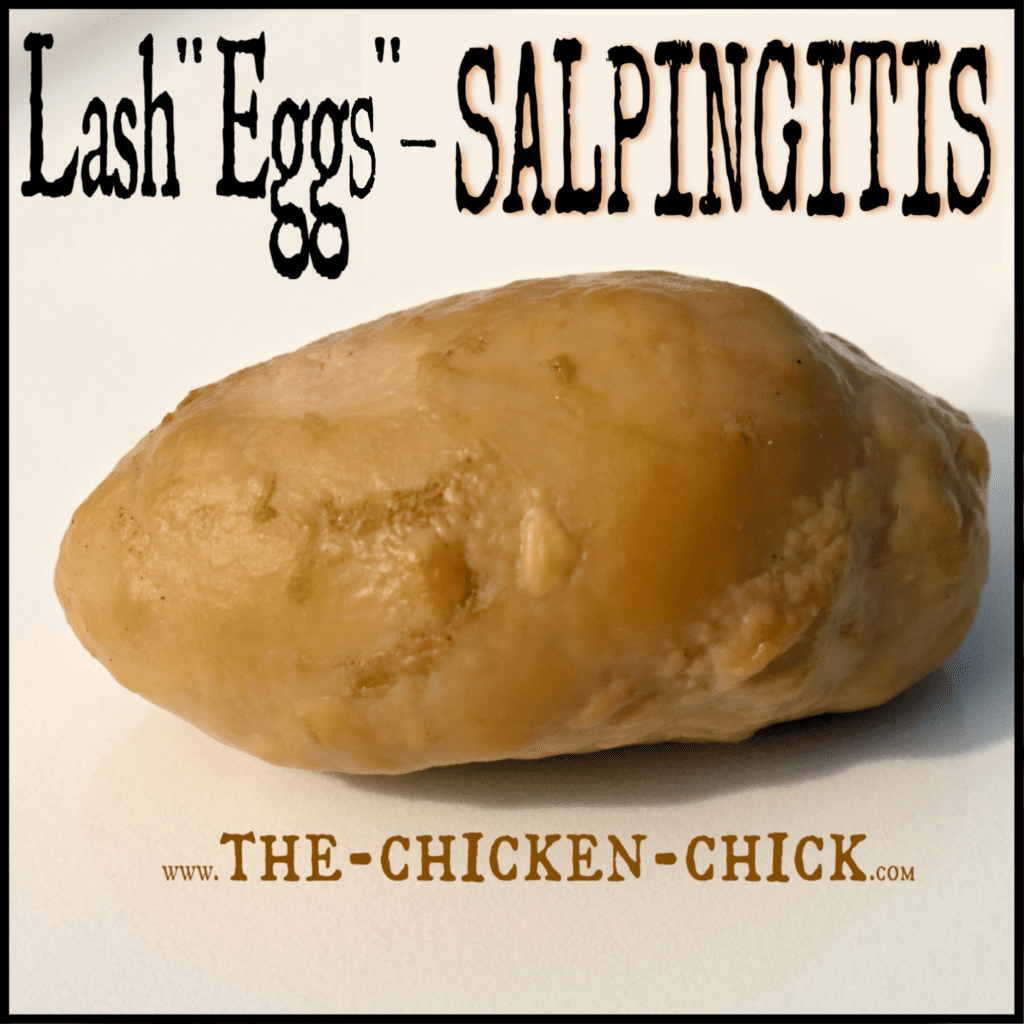

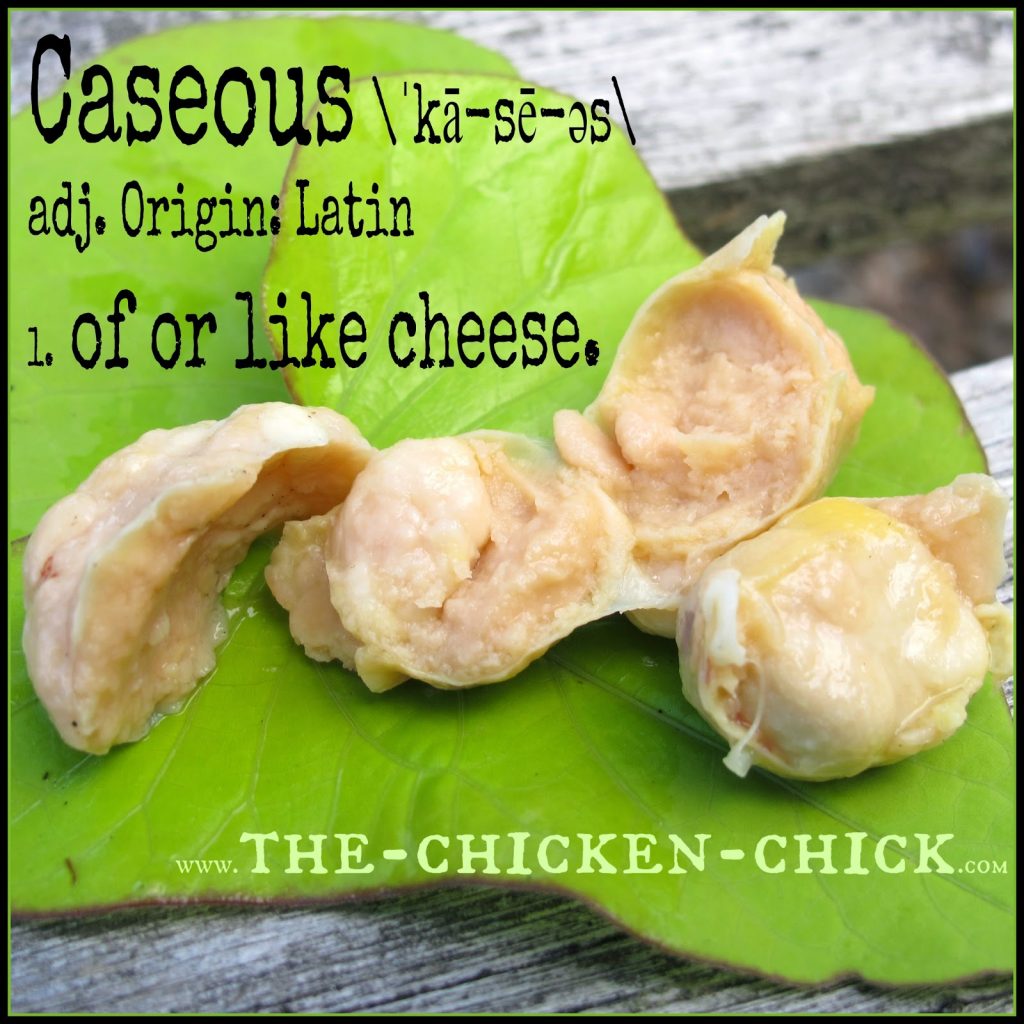

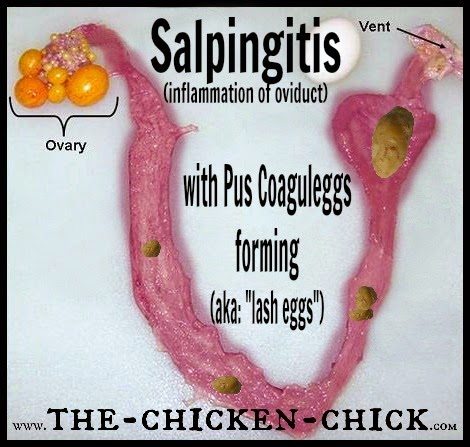
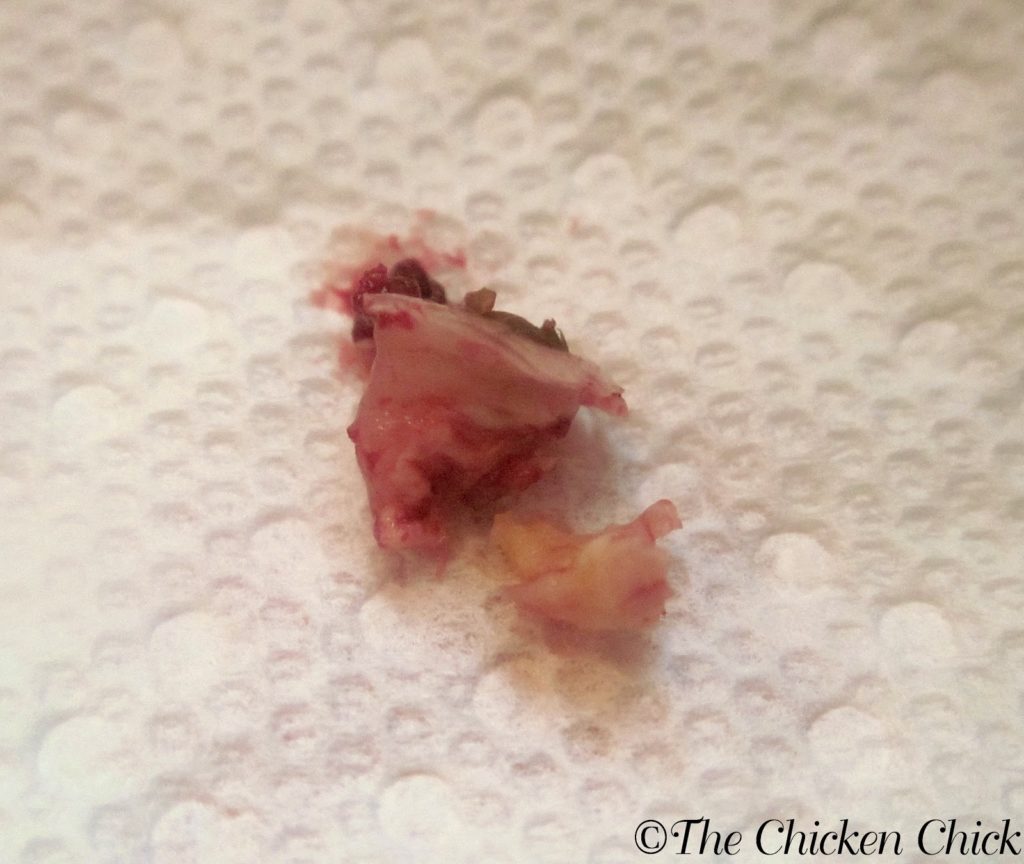
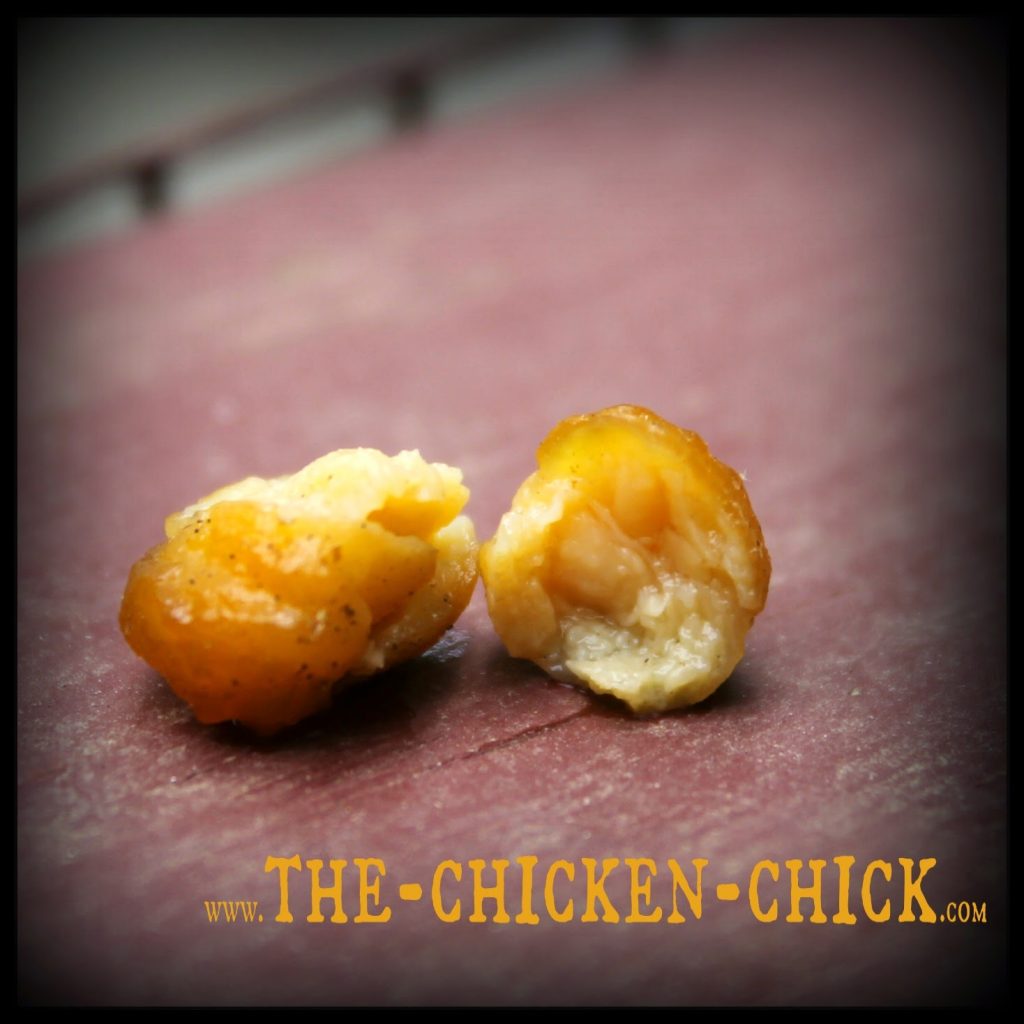
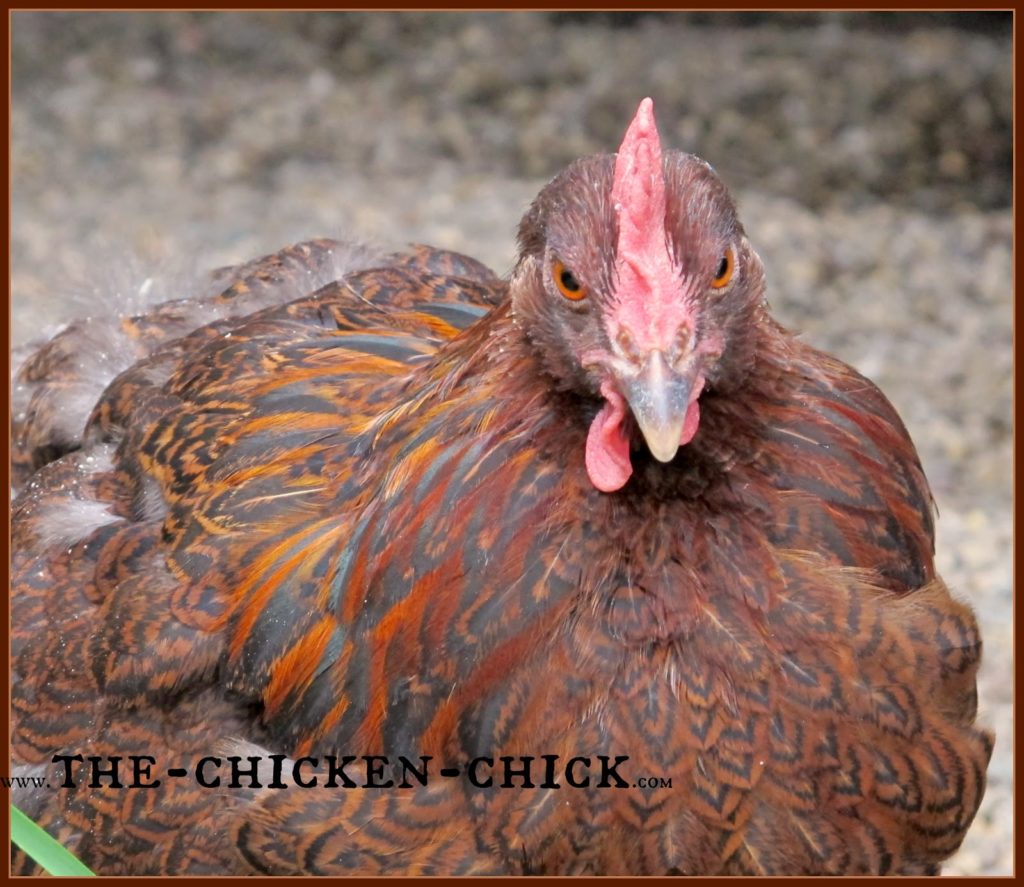
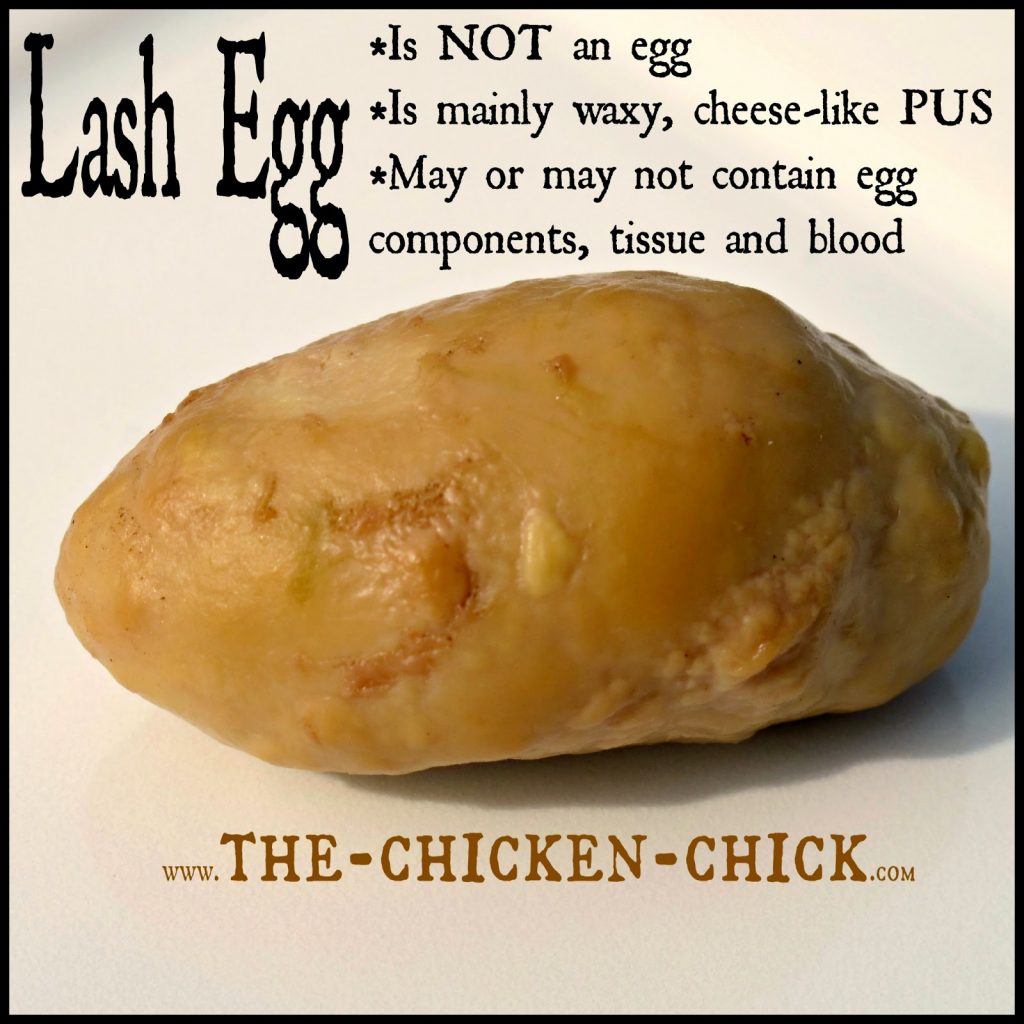
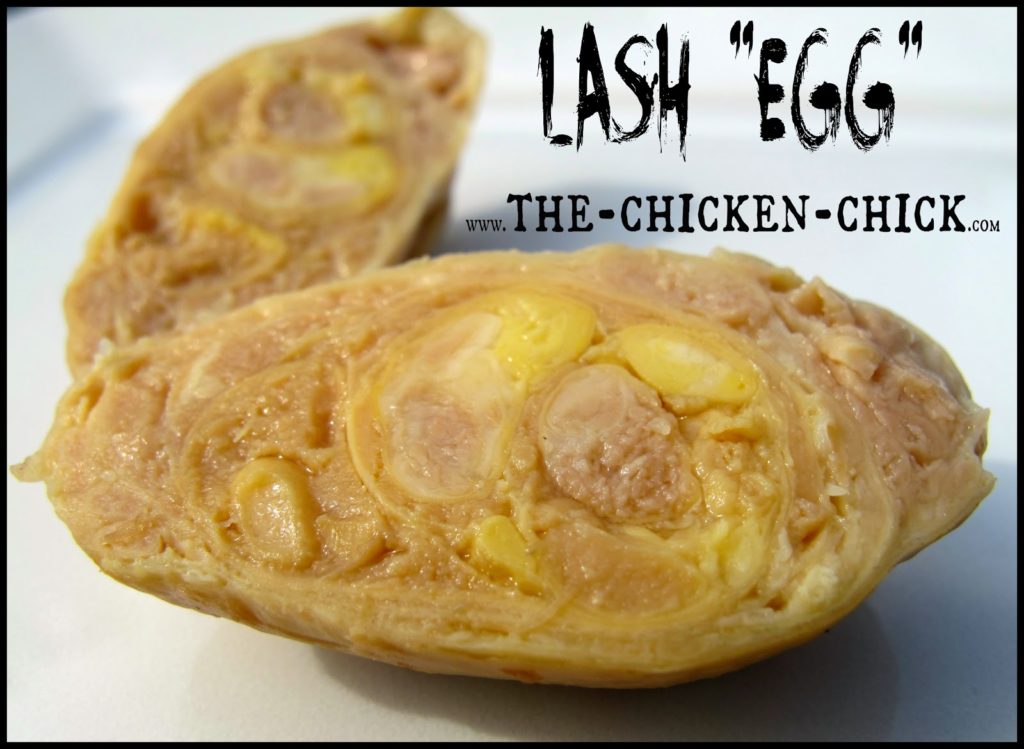
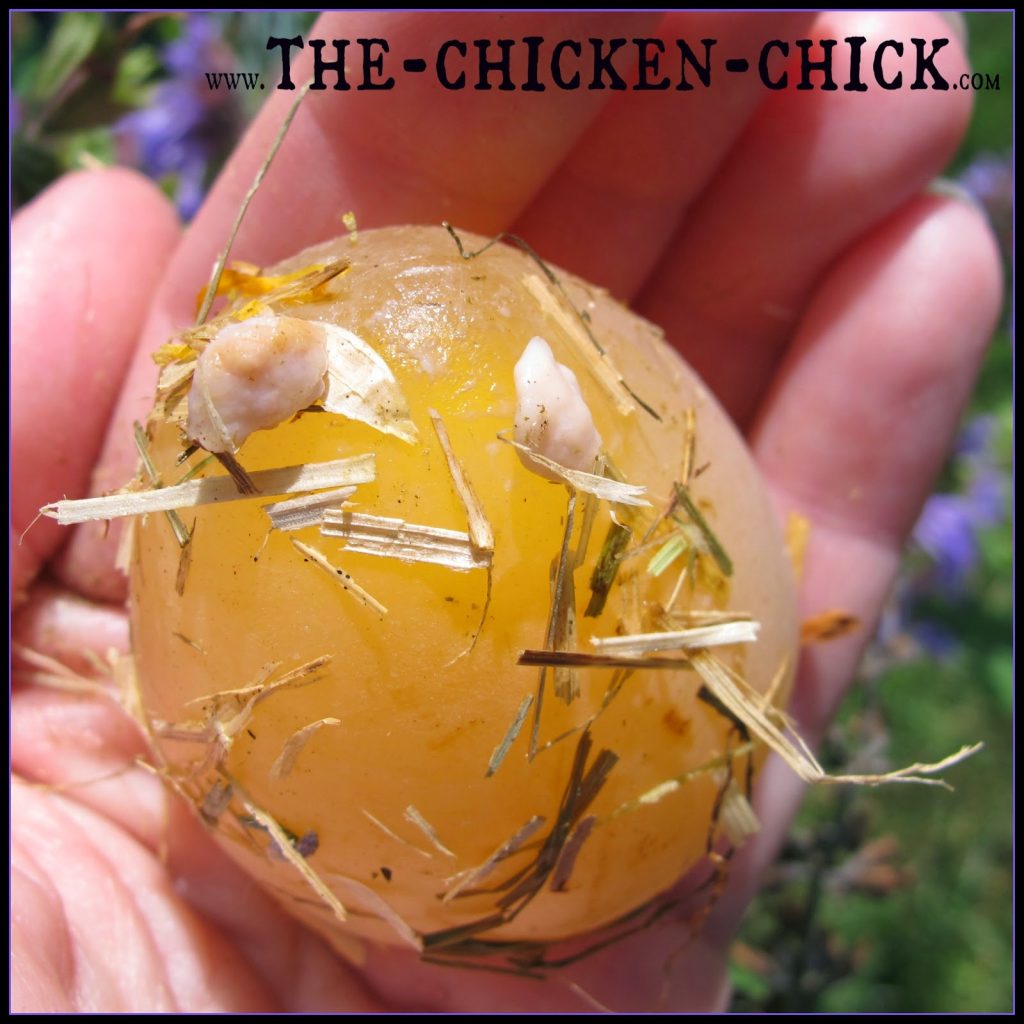
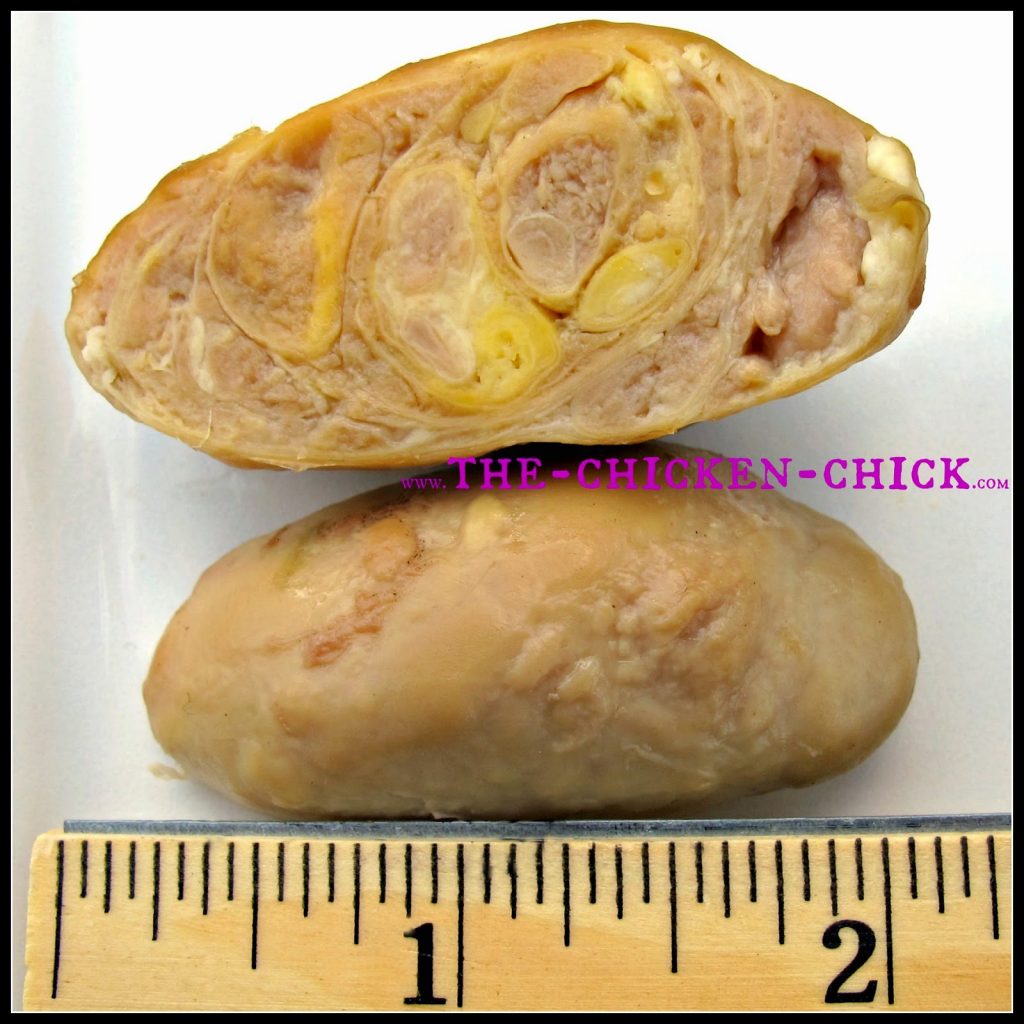
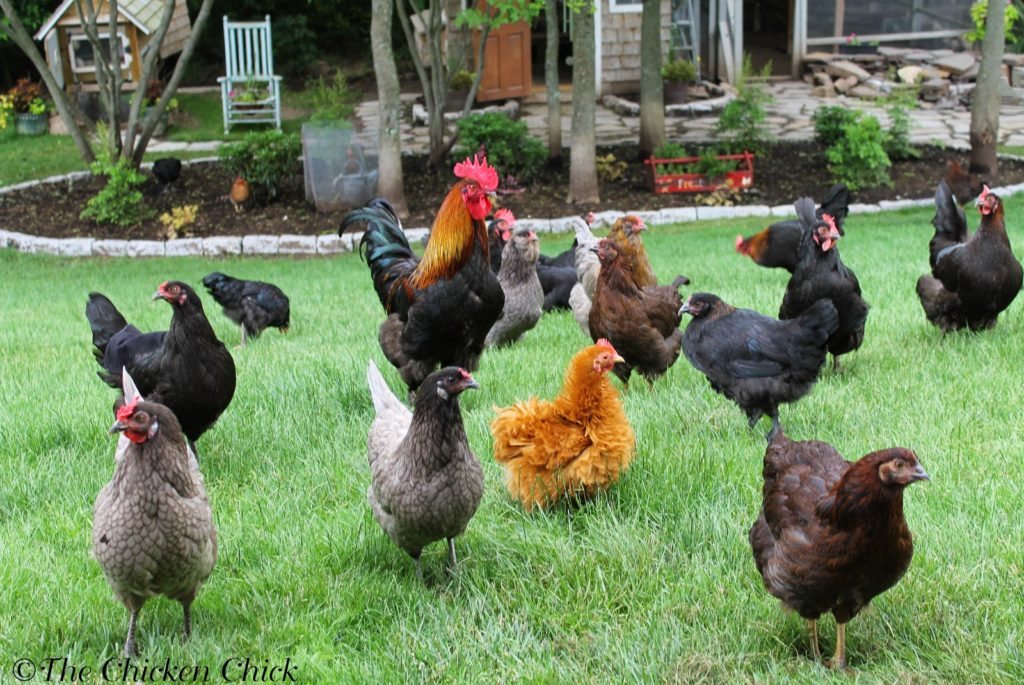
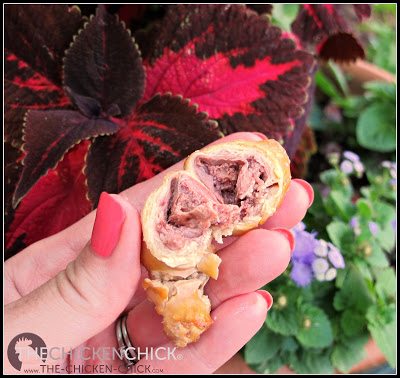
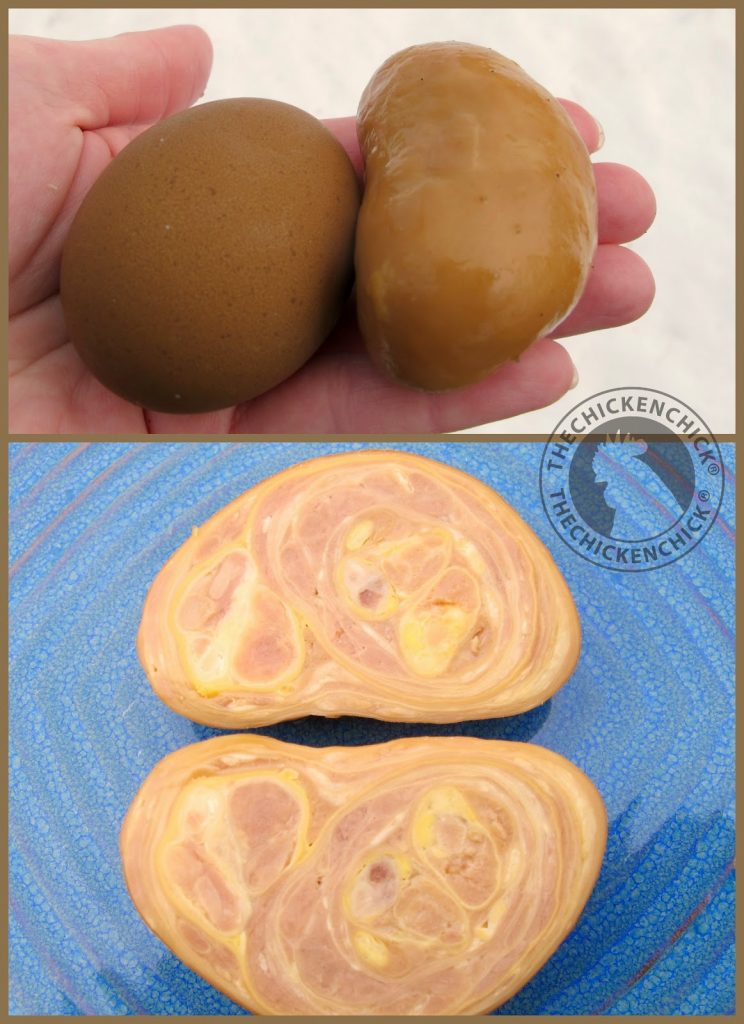
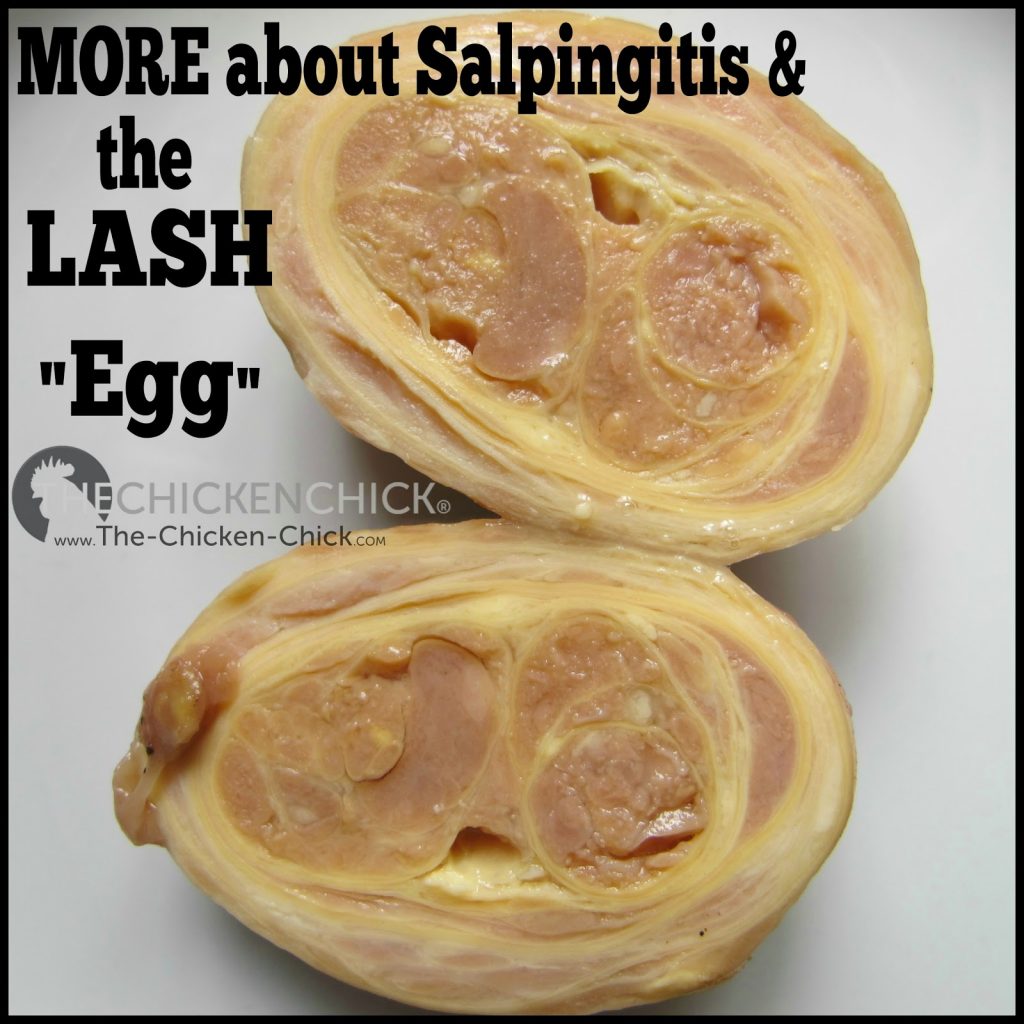
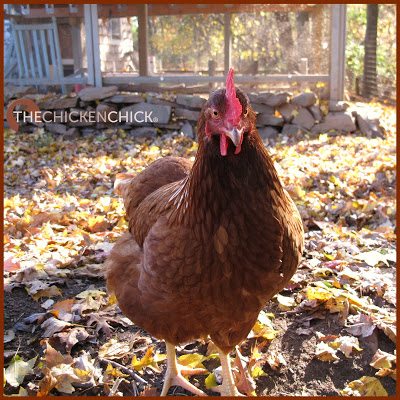
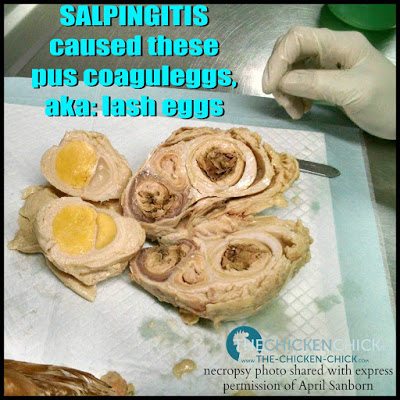






















If your bird has this and lays an egg that you eat before she starts getting really sick, it that ok to eat? Yuck. at the thoughts of it, but what if it looks like a normal egg, but has that salpingitis in it.
Ok…so now I know what that was…eww! I found it last summer and I have no idea who laid it :( I will have to separate them and see whats what I guess :(**
I’m quite disappointed by this article. I, and many other chicken-keepers i know, have experienced their hen laying a lash egg, and it has not been Salpingitis. One of my hens was less than a year old when she laid a lash, and she was and is still in perfect health and lays almost every day. I know many other people have had the same experience, with vets explaining that, in many cases, a lash is simply a piece of the reproductive system coming away. You’re right, it can mean Salpingitis, but articles like this can cause chicken-keepers to go… Read more »
That’s so sad :(
I noticed that she said to minimize food scraps to feed the chickens as one of the ways to minimize the chances of this disease.. I’ve raised chickens for years and I NEVER fed them food or table scraps or anything of the like.. it was always only corn, day to week old bread, and other chicken feed and whatever else they found in the yard to eat, ie., worms, etc. and that was it.. also they were fed , if they have no access to anything like it, was this rough ground up pebbly stuff, I forget the name… Read more »